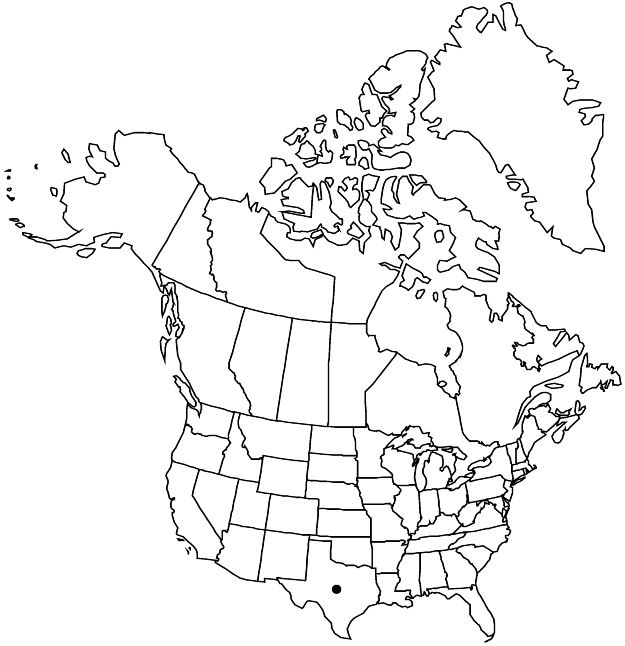Bernardia myricifolia
Bot. California 2: 70. 1880.
Shrubs to 3 m. Leaves: stipules caducous, green to straw colored, base not thickened, without dark resinous exudate; petiole 0.5–2 (–2.2) mm; blade broadly elliptic to orbiculate, 1.5–4.5 × 1–2.5 cm, margins revolute, crenate, laminar glands (0–) 2–4 (–6), abaxial surface grayish white, densely spreading and/or appressed stellate-pubescent, adaxial surface green, glabrate; veins prominent abaxially. Inflorescences: staminate thyrses 5–15 mm. Staminate flowers: stamens (10–) 12–15 (–20), nectary glands claviform. Pistillate flowers: pistil 3-carpellate; styles 3, densely penicillate adaxially. Capsules 7–8 mm, 3-lobed.
Phenology: Flowering spring–summer; fruiting summer–fall.
Habitat: Shrub communities on rocky limestone hills in oak-juniper woodlands, thornscrub.
Elevation: 100–1300 m.
Distribution

Tex., Mexico (Chihuahua), Mexico (Coahuila), Mexico (Durango), Mexico (Nuevo León), Mexico (San Luis Potosí), Mexico (Sonora), Mexico (Tamaulipas)
Discussion
In the flora area, Bernardia myricifolia is known from southern Texas, with a single outlying collection from Brewster County [H. B Parks 1724 (MO); B. L. Turner et al. 2003]. Reports of B. myricifolia from Arizona and California are based on plants identified here as B. incana. Reports of B. myricifolia from New Mexico are based on specimens of B. obovata. In Mexico, B. myricifolia is most abundant in thornscrub in the northeast to montane areas of the Chihuahuan Desert.
Selected References
None.
Lower Taxa
"connate" is not a number. "distinct" is not a number.